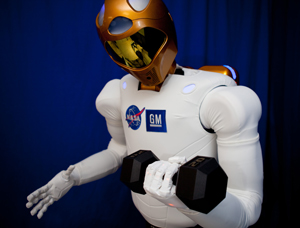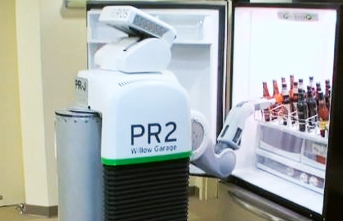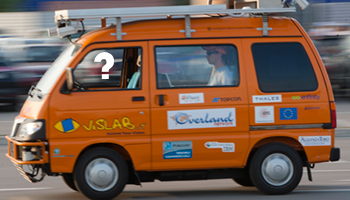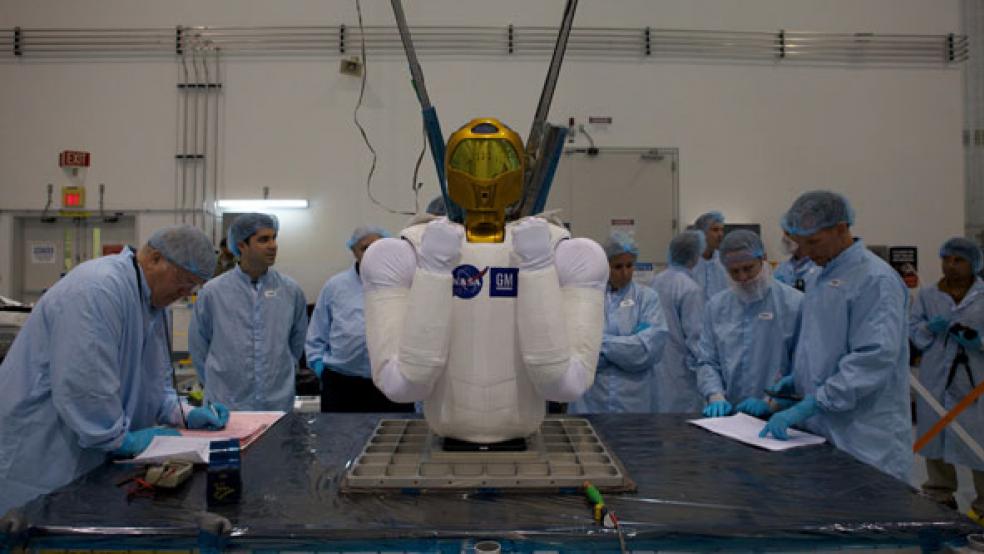In part two of our special report on the robot economy, we look at how robots — industrial, service, or social — are changing the economies of the developed world. Will they create jobs or eliminate them? Will they increase productivity or cost more than they give back? The White House recently called robotics an economic priority, saying the technology “is reaching a ‘tipping point’ and is poised for explosive growth.”
“For all the excitement and promise, no one can say with any certainty when — or even if — this industry will achieve critical mass. If it does, it may well change the world,” wrote Microsoft co-founder Bill Gates three years ago in an oft-cited essay about the coming age of robots. The personal computing pioneer was comparing the state of robotics to that of computing in the late 1970s — poised to take off, but not quite ready for primetime.
In just the few years since Gates published his robot manifesto, though, robots have made progress on several important fronts. So-called service robots that tote heavy loads, clean and even perform surveillance have been invading new realms in significant numbers, especially hospitals and warehouses. A handful of prototype “social robots” that can respond to human behaviors and emotions could soon be doing practical work in schools, homes and care facilities.
during the first half of this year and projected
$400 million in sales for all of 2010.
Robots have grown into a multibillion-dollar industry, with some segments expected to double in just the next few years. Industrial robots are still the behemoths of the business in every way, with sales just shy of $4 billion in 2009. Though the recession has taken its toll — last year was the worst year for industrial robots since the 1980s. Robot toys took a severe hit too, but sales of service robots for both commercial and personal uses — the fastest growing categories of bots — were down only slightly and all robot species have been making a strong comeback in 2010, according to the nonprofit International Federation of Robotics. The IFR’s latest statistics project that $19 billion worth of service robots will be sold between 2010 and 2013.
Business and social issues could still slow the robot revolution, and technological hurdles remain in creating the next generation of autonomous, versatile, multitasking robots that most people imagine when they think of a robot. But the simple task-specific machines already making inroads illustrate how robots are beginning to change the way many of us work and live (see “Robots: New Jobs, New Opportunities, New Challenges).
In one clear sign of a robot recovery this summer, Roomba maker iRobot — the oldest and by far the largest manufacturer of robots for consumers — announced a huge jump in revenues during the first half of this year and projected $400 million in sales for all of 2010. Best known for its home-cleaning robots, iRobot actually started out making rugged military service robots, which remain strong sellers — the U.S. Navy placed a $20 million order for another 125 PackBots in August. But a surge in international sales of cleaning bots has accounted for more than half the company’s revenue growth this year, according to co-founder and CEO Colin Angle.
endorsed robot technology as a national priority
and necessity, and put billions of dollars in
research funding behind the drive.
The governments of Japan and South Korea have both formally endorsed robot technology as a national priority and necessity, and put billions of dollars in research funding behind the drive. The South Korean program falls under the Ministry of the Knowledge Economy, which oversees economic growth and ensures an educated workforce. The European Union and individual European governments are beginning to see the demographic need for robots, says Fabien Bardinet of the French robot-maker Adlebaran, and investment in social robots to support health and home care in particular.

In the U.S., NASA and the Pentagon’s Defense Advanced Research Projects Agency (DARPA) have been the main sources of funding for robotics research and artificial intelligence (AI), which may explain why robot rovers are already exploring Mars, and why the group of Americans most likely to have everyday interactions with robots are U.S. troops. Until very recently, the closest thing the U.S. had to a national policy on robots was a goal set by DARPA 10 years ago in the Pentagon’s annual budget request that one-third of U.S. military vehicles should be unmanned by the year 2015.
This summer, though, the Obama administration declared robotics one of several priorities in spurring economic growth by developing advanced manufacturing technologies, and followed in September with a new small-business grant program to kick-start private-sector robot research.
to interact with a robot “butler,” which would
in turn manage and schedule the other machines’ activities.
“Telepresence” is one category that robot-makers are betting will take off soon. Increasingly popular in hospitals over the last few years, telepresence robots are basically mobile videoconferencing systems, driven and controlled by the remote user over a wireless network. Besides mobility, the roughly person-sized robots offer a physical presence for users that a conference call lacks, and doctors are already using them to perform remote medical examinations. A new entry from the startup Anybots went on sale last month for $15,000 — a price point the company thinks will make it worthwhile for businesses to have a roving embodiment of an absentee owner or telecommuting employees. Such a device could also help doctors, nurses, and other workers essentially be in two places at once, a growing necessity for an increasingly global and mobile workforce.
Many robot-makers are also eyeing the potential for telepresence robots as part of a home care and monitoring system for the elderly or disabled. The looming demographic crisis that has Japanese and South Korean roboticists scrambling to build home-helper and caretaker robots for their aging populations is a growing focus of European and U.S. companies, too. Rather than a single multitasking caretaker — some nurselike version of the Jetsons’ maid Rosie — roboticists like Angle are focusing on filling homes with an array of single-task cleaning and helper devices. In the ideal scenario, a human would only have to interact with a robot “butler,” which would in turn manage and schedule the other machines’ activities.
Most elements of such a system don’t yet exist, but when they do, they could be a covered health care cost. Angle and others point hopefully to the CLASS Act, a component of the health care bill passed last spring that establishes an employee-funded long-term care insurance program, which might be used to pay for home robots that help to keep people out of nursing homes.
Although more than 11 million personal service robots (mainly for home maintenance and entertainment) are expected to sell in the next few years, a class of robots sold explicitly as research platforms hints at what the next generation of robots, capable of diverse tasks and of exercising “judgment” in unfamiliar situations and environments, will be like. “PR2,” from Willow Garage, an institute founded by Google’s chief architect, is perhaps the Rolls Royce of this group and formally went on sale last month to researchers for $400,000.

Roughly human-size, with long arms and a square head atop a slab-like rolling base, PR2 has successfully navigated the company’s offices, finding electrical outlets and recharging itself, identifying doorknobs and using them to open and pass through doors. Over the past year, its creators have orchestrated a variety of demonstrations, many of them lighthearted, to show the robot is capable of learning nearly everything one might want it to know. It can shoot pool with a hustler’s skill and after an office party it cleaned up dirty cups and food containers — which may sound simple, but for a robot, identifying what is and is not trash is an impressive feat of object recognition and AI decision-making.
Whether everyone will want to work or live alongside even the most talented robot is another matter. As virtual reality pioneer Jaron Lanier pointed out in a recent New York Times editorial, the fear (or hope) that technologies will become too smart and take over the world is most prominent in the tech community itself. Average Americans may be just as concerned that robots are still too dumb to be trusted with important tasks. As anyone who has ever experienced a computer crash or a dropped cell phone call knows, technology is rarely perfect, even after it has been deemed ready for market. “Who is liable if the robot you programmed to bathe your elderly mother drowns her in the tub?” asks technology law professor M. Ryan Calo of Stanford Law School.
A more immediate worry is whether robots will take human jobs. “There’s no evidence technology reduces employment in net,” says MIT economist David Autor, “but that doesn’t mean there aren’t winners and losers.” Throughout modern history, he notes, technology has displaced unskilled labor, and sometimes skilled labor — from blacksmiths and weavers to the typing pool. “Technology does change the composition of jobs in really important ways,” Autor explains. “What you want to be is someone whose skills become more valuable when that machinery gets cheaper.”
The White House Office of Science and Technology Policy’s deputy director, Tom Kalil, thinks the economic growth promoted by robots will create more jobs than the machines take away. In the past, “the income-generating effects of new technologies have proved more powerful than the labor-displacing effects: Technological progress has been accompanied not only by higher output and productivity, but also by higher overall employment,” he wrote in an e-mail.
In industries where razor-thin margins are pressing companies to cut costs, robots may well replace some people, just as automation has done in the past. Proponents argue that robots could make the competitive difference that prevents a company from folding and laying off all its workers. Robot advocates also point to the many ways robots can create jobs (and not just for robot designers) or strengthen existing industries.
For instance, lucrative spinoff technologies from robotics research are already appearing. A $1.6 million set of “robotic” surgical tools, like the Da Vinci minimally invasive surgical system, is more akin to a remotely operated vehicle than a robot, but its ultra-precise control mechanisms are derived from an ongoing DARPA-funded project at the Stanford Research Institute to create a truly robotic frontline military medical unit called the Trauma Pod. The “pod” would have patient-lifting robots, robo-surgical nurses and even a robot surgeon — mostly remote-controlled by real doctor using an interface similar to the Da Vinci system.
Honda is developing “personal mobility” devices for the disabled that borrow heavily from the company’s work on making its humanoid robot prototype, Asimo, be able to walk, and the Segway transportation device was also derived from robot-mobility research. Powered exoskeletons to help humans lift heavy objects are another category of robotics-spinoff expected to grow quickly.
Research into self-driving vehicles, much of it DARPA-funded, too, is likely to find its way into civilian automobiles as improved obstacle recognition, lane-keeping and other safety features. An Italian team from the artificial vision lab at the University of Parma is demonstrating their version of the technology right now on an 8,000-mile trip . The group left Italy in their self-driving electric van in late July and are so far heading without serious incident for a late October arrival at the Shanghai World Expo.

NASA’s Robonaut 2 (R2) will be going for an even longer test drive soon after that. Scheduled to fly to the international space station in early November, R2 was developed in collaboration with General Motors, which says it will also be incorporating some of what its engineers learned from the project into the company’s cars. The R2 will largely be tested to see if it is affected by radiation and the lack of gravity, but the robot’s extra-dexterous hands are designed to eventually hold human tools and perform dangerous or simply dull jobs for the astronauts. That makes R2 a precursor to the kind of robot – smart, autonomous, nimble and safe – that robot proponents believe is not far off and could revolutionize human lives.
Perhaps the most persuasive argument that robots will raise all economic boats is made by Rodney Brooks, co-founder of iRobot and mentor to a generation of roboticists as head of MIT’s artificial intelligence lab. At just 55, Brooks retired this summer from MIT to focus on his startup company, Heartland Robotics, which is rumored to be working on a humanoid robot that could transform assembly line manufacturing. Heartland is in “stealth mode” and did not respond to an interview request, but observers took Brooks’ departure from MIT as a signal that a product, or at least an announcement of what it might be, could come soon.
In a talk he gave last year at the Bay Area Maker Faire, Brooks outlined his vision for “remaking America” with flexible, smart robot assistants for assembly line workers. With the nimble fingers of Robonaut 2 and potentially the smarts of a PR2, such a humanoid assembly robot might blend the best qualities of versatile service robots and reliable industrial robots. Rather than displacing people, Brooks predicts, the new breed of manufacturing bot will reverse overseas outsourcing and revitalize U.S. manufacturing, turning it once again into a primary engine of the economy. “I think we can empower American workers by building these right sort of robots,” said Brooks. Let’s hope he’s right, because the robots are coming.
Christine Soares is a New York-based journalist and a former editor of Scientific American.




